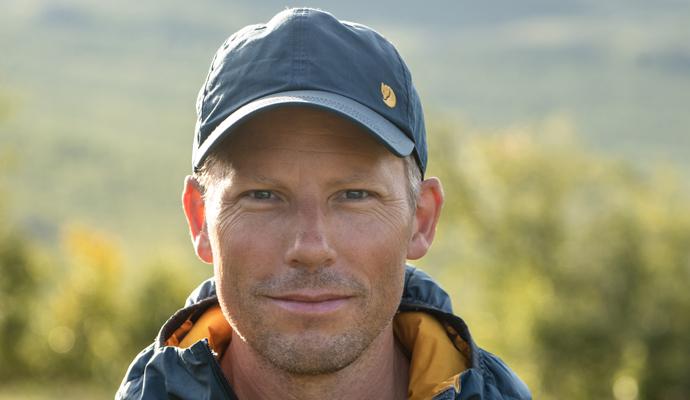What Gets You Up in the Morning?
Optimism and an eagerness to seize opportunities can be a far more useful source of executive inspiration than fear.
What keeps you up at night? It’s a question we’ve heard posed in nearly every panel and senior leader interview conducted in recent years, and as a result, it has become tiresome and rote. But I believe the effect of this query is more pernicious than simply boring — stay awake long enough to think it through, and you’ll recognize its essentially negative nature. The question assumes that leaders are in the habit — indeed, that they have a responsibility — to let worry pervade their every hour, even those precious few required to refresh, balance, and sustain human effort.
That’s why it was bracing to hear the chief economist of a global bank describe how his CEO responded to this question at a recent meeting of senior employees. “I’m sick of that question,” the CEO had said. “Besides, it misses the point. More important is: What makes me leap out of bed in the morning?”
The CEO then told his listeners that “the terror of missing an opportunity” impelled him to get up every day. Within 24 hours, the bank’s shiny new headquarters became known throughout the company as “the tower of terror.” That’s hardly the most positive vision. But if we focus on the invocation of opportunity rather than terror, we’ll recognize that the CEO made an important point: It is vastly more productive to spring out of bed eager to spot new opportunities than it is to greet the day in a defensive crouch brought on by post-midnight agony fests. And it is a far more powerful way to lead an organization.
In other words: In an economy in which the harnessing of human knowledge offers the chief — and perhaps only — competitive advantage, the need to engage human talent has become paramount. And just as leaders on the lookout for opportunity can build and stimulate engagement, they also can undermine engagement by exuding negative energy.
Beverly Kaye, founder of Career Systems International, an engagement and development consultancy, is coauthor of the engagement classic Love ‘Em or Lose ‘Em: Getting Good People to Stay, now in its fifth edition (Berrett-Koehler, 2014). She has been examining the sources and advocating for the importance of employee engagement longer than anyone I know. “One of the first questions we asked people when doing our original research on engagement in the 1990s was what about their work motivated them to get out of bed in the morning,” she told me. “If you understand that, you can understand what engages people.”
People want a few basic things in their work, Kaye pointed out: “They want to feel valued, they want to be able to use their skill sets, and they want to be challenged by new ways to exercise and build those skills.” If jobs don’t give people the opportunity to fulfill these basic needs, many employees will leave — and the best are often the first to go. “And those who stay will often check out mentally and simply disengage, which from an organizational point is probably worse,” she said.
If jobs don’t give people the opportunity to fulfill these basic needs, many employees will leave — and the best are often the first to go.
Over the years, Kaye and her researchers have also asked thousands of people why they left their organizations. “What we hear usually comes down to some variation on their not being able to see any opportunities in their job,” she said, which is why a focus on opportunities is critical in a leader. “People’s experience at work is determined by their manager, and the experience of managers is determined by those who manage them, going all the way up to senior leaders….Leaders who are optimistic about what their people can accomplish, and see challenge through the lens of opportunity, inspire confidence throughout the organization.” Optimism cascades down.
By contrast, leaders who worry excessively — the up-all-night types — can set a cautious or even frightened tone that spreads discouragement. In Kaye’s experience, “worried leaders tend to fail their people in one of two ways. They may be distracted and overlook signals people send about what they are capable of. Or they micromanage, either because they don’t trust their people or as a way of managing their own anxiety.” Both approaches inhibit morale and make it impossible to build a culture of engagement.
It’s interesting to note that the CEO who pushed back on the original question — “What keeps you up?” — had been chief risk assessment officer at another large financial institution. A former member of his executive team who heard about the pushback observed that the answer showed how much the CEO had grown as a leader. Worrying about what could happen, Kaye observed, is practically a job description for risk managers. “If you don’t have a few sleepless nights, you may not be doing your job,” she said. “But a CEO has a different brief. He or she needs to prepare the company for the future, which is all about seeing the opportunities in the larger picture.”
Jim Kouzes and Barry Posner, my gurus in all things leadership, note in their classic work, The Leadership Challenge: How to Make Extraordinary Things Happen in Organizations (Wiley, 1987), that successful leaders always “challenge the process.” That is, they look for opportunities to go beyond the status quo and innovative ways to improve the organization. Kouzes and Posner are clear that doing so always requires some degree of experiment and risk, as well as a willingness to accept the consequences when a risk does not pan out.
In a highly uncertain environment, that’s a pretty good prescription for what most of us can do. And recognizing it might bring us to a renewed recognition that wakeful worry does not a good leader make.





